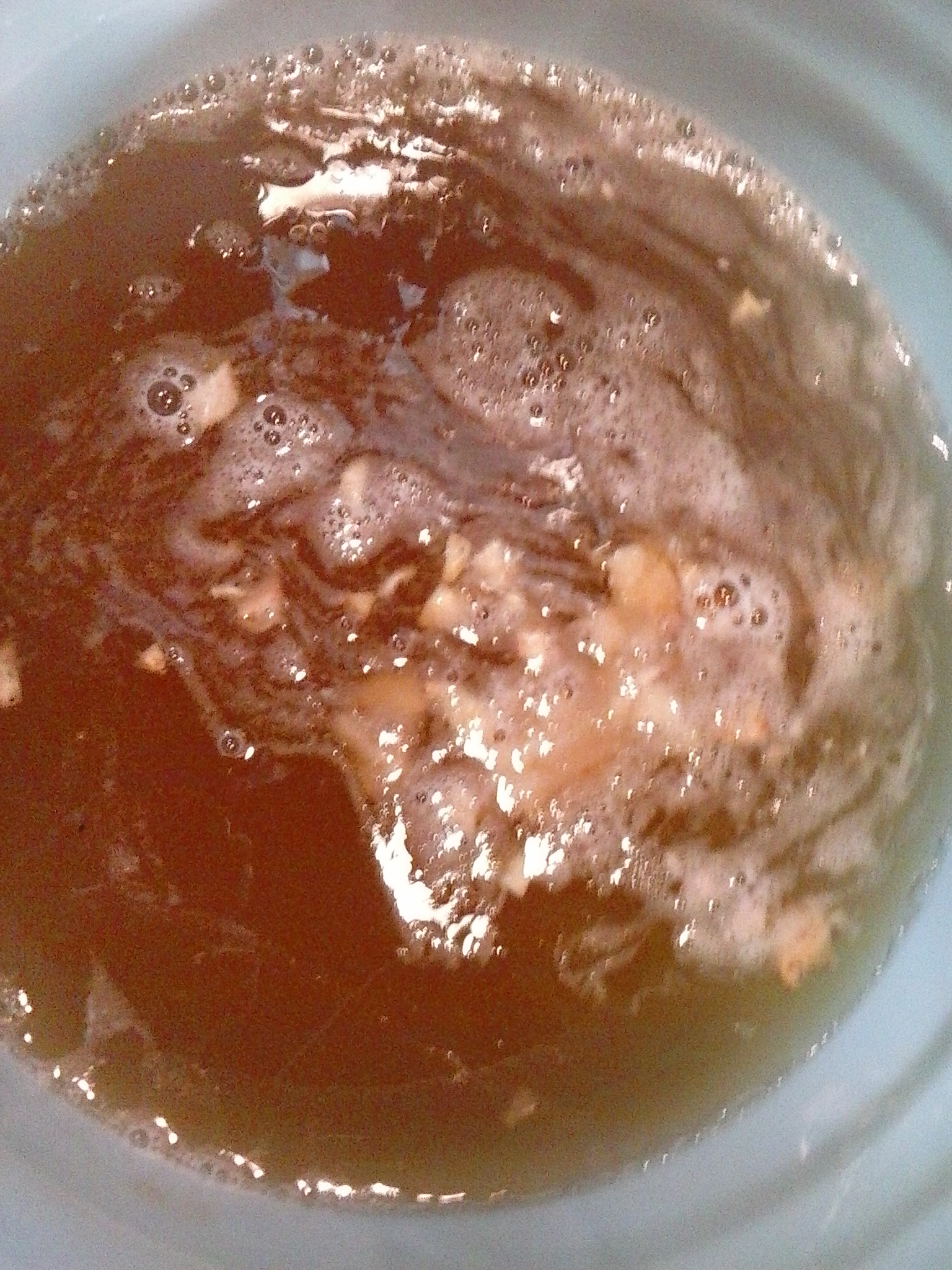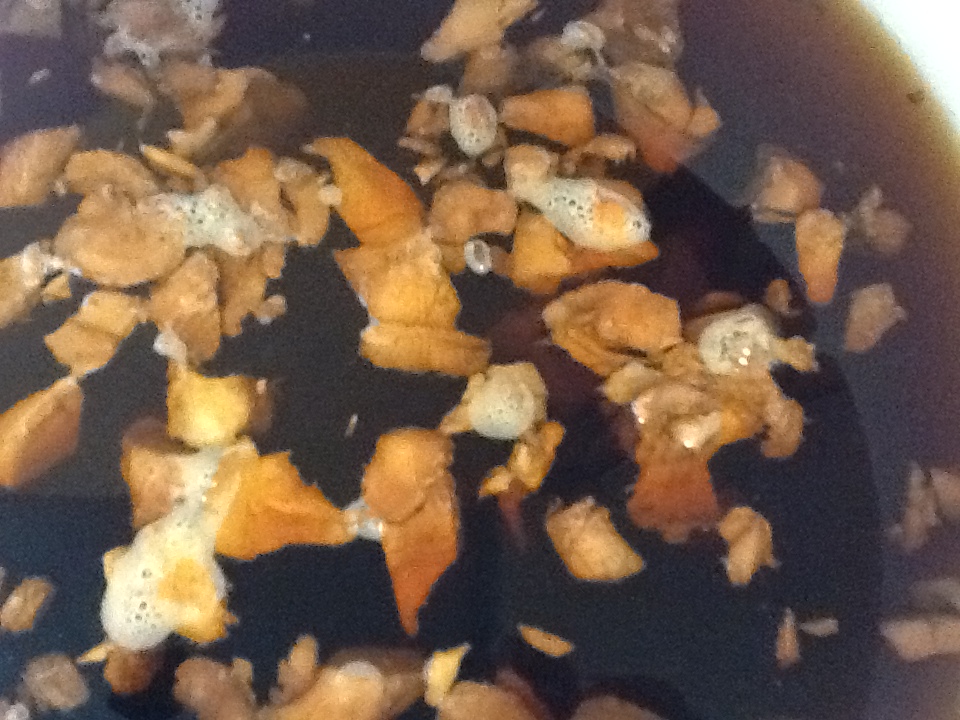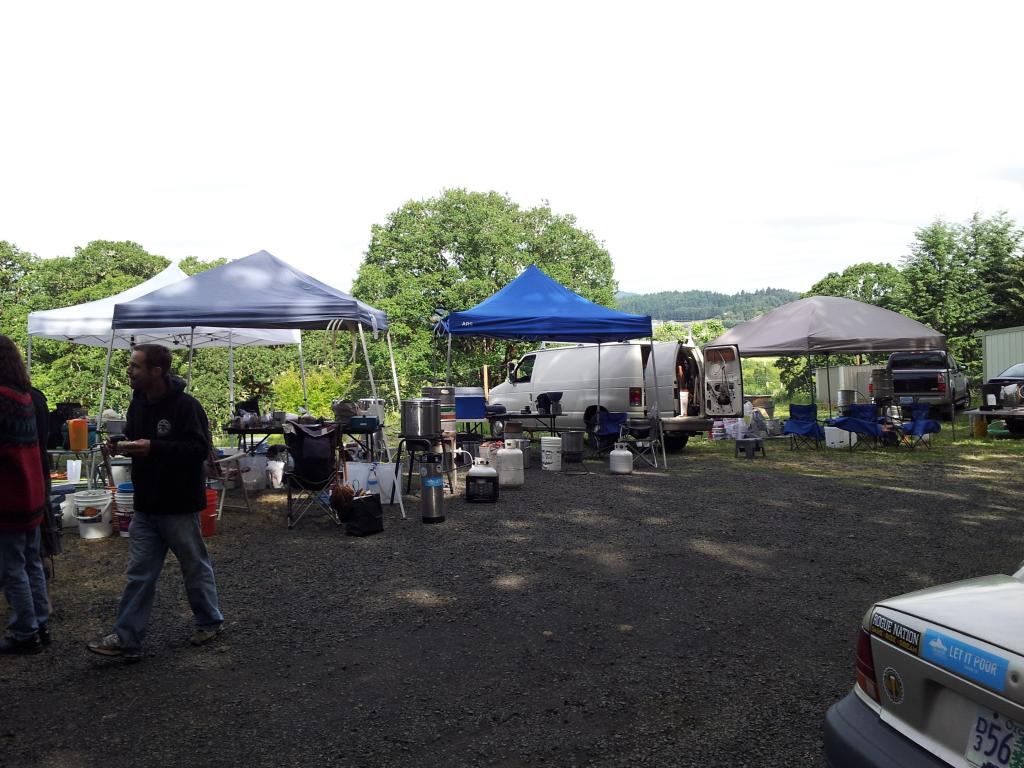Well, with the year end madness over and the new year’s madness not quite in full gear yet, it seems like a good time to share what I’ve been up to in the homebrewing world…. The American mild project is dead in the water at the moment. But that doesn’t mean it’s dead. The three test batches I’ve brewed so far haven’t been stellar, but none of the totally sucked and they’ve given me some signs of where to take things. I’m looking forward to doing more experimenting with the recipe, but for now it will take a back seat to a couple other experiments. Not to mention brewing some beer I know and love in order to keep the beer fridge full! Yesterday, the matsutake mushrooms went into the BGSA I brewed a few weeks back. Usually when I do an experimental beer like this I have at least some idea of what the finished product will be like. This one is likely to be a total surprise. The one light in the darkness is that when I added the mushrooms, the aromas of the beer and the mushrooms seemed complementary. Let’s hope the flavors are, too! If you look closely at the pic below, you can see some of the shrooms floating in the beer.

My friend Mitch Scheele, who writes the homebrewing column for the Northwest Brewing News, contacted me about doing an evaluation of the effects of different sugars on beer flavor. Next Tues., we’ll be brewing up 10 gal. of a pretty standard wort (pale malt with a touch of C60). At the end of the boil, we’ll split it into 4 different fermenters and add different sugars to each. We’ll be using honey, molasses, D-45 (from candisyrup.com) and muscovado sugar. When fermentation is done, we’ll try to guess which is which in a blind tasting. But the main objective is simply to evaluate what each tastes like, not so much to decide which is “better”. In a couple months we’ll do another round with another batch of sugars. In the world of “normal” brewing, tomorrow I’ll be whipping up a batch of my Milo’s Alt recipe (named for a dear departed cat) and after that a batch of Dean Larson’s classic “Christmas Tree Ale” version of Sierra Nevada’s Celebration. So, let’s hear about what you’re brewing in the new year!


